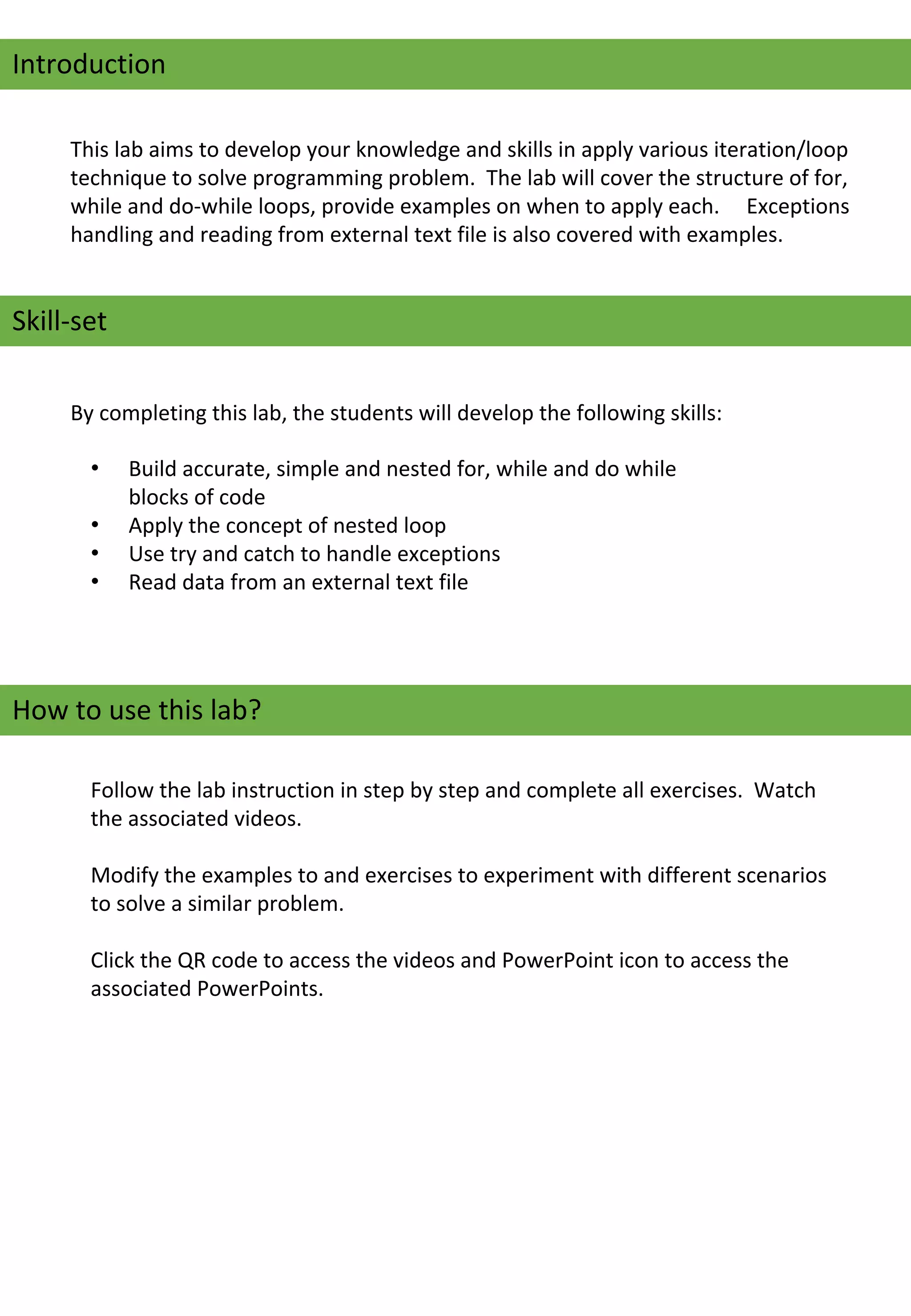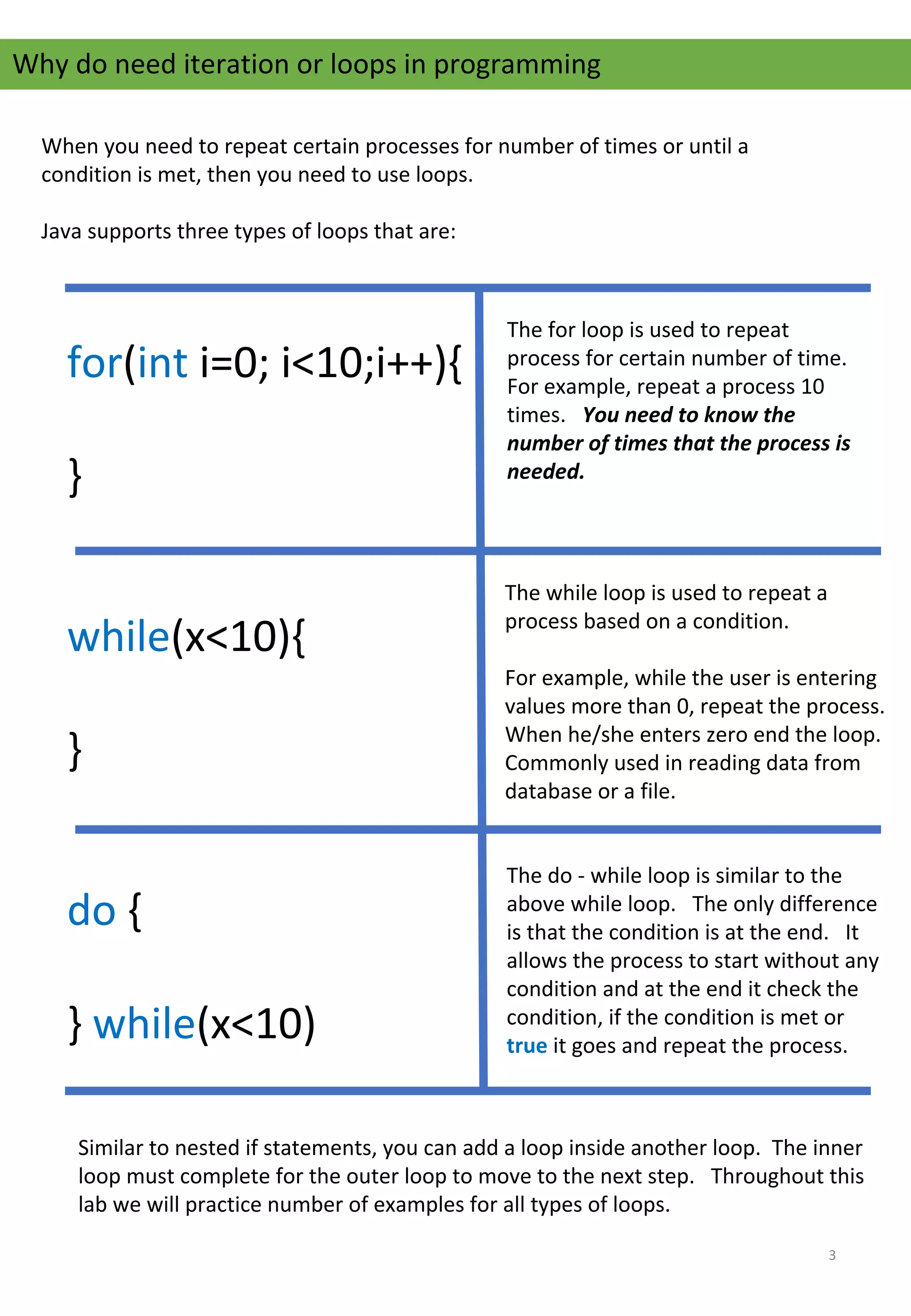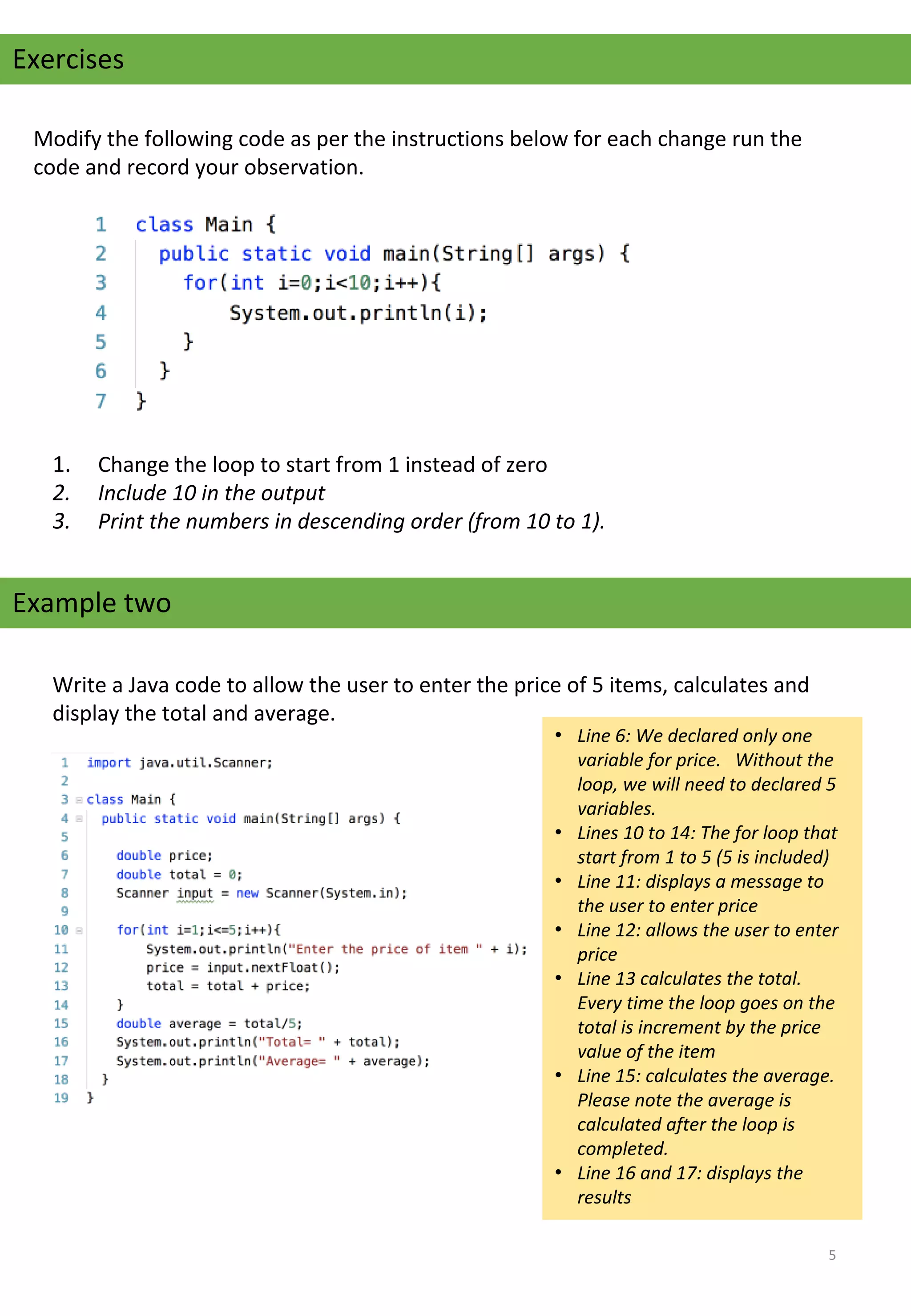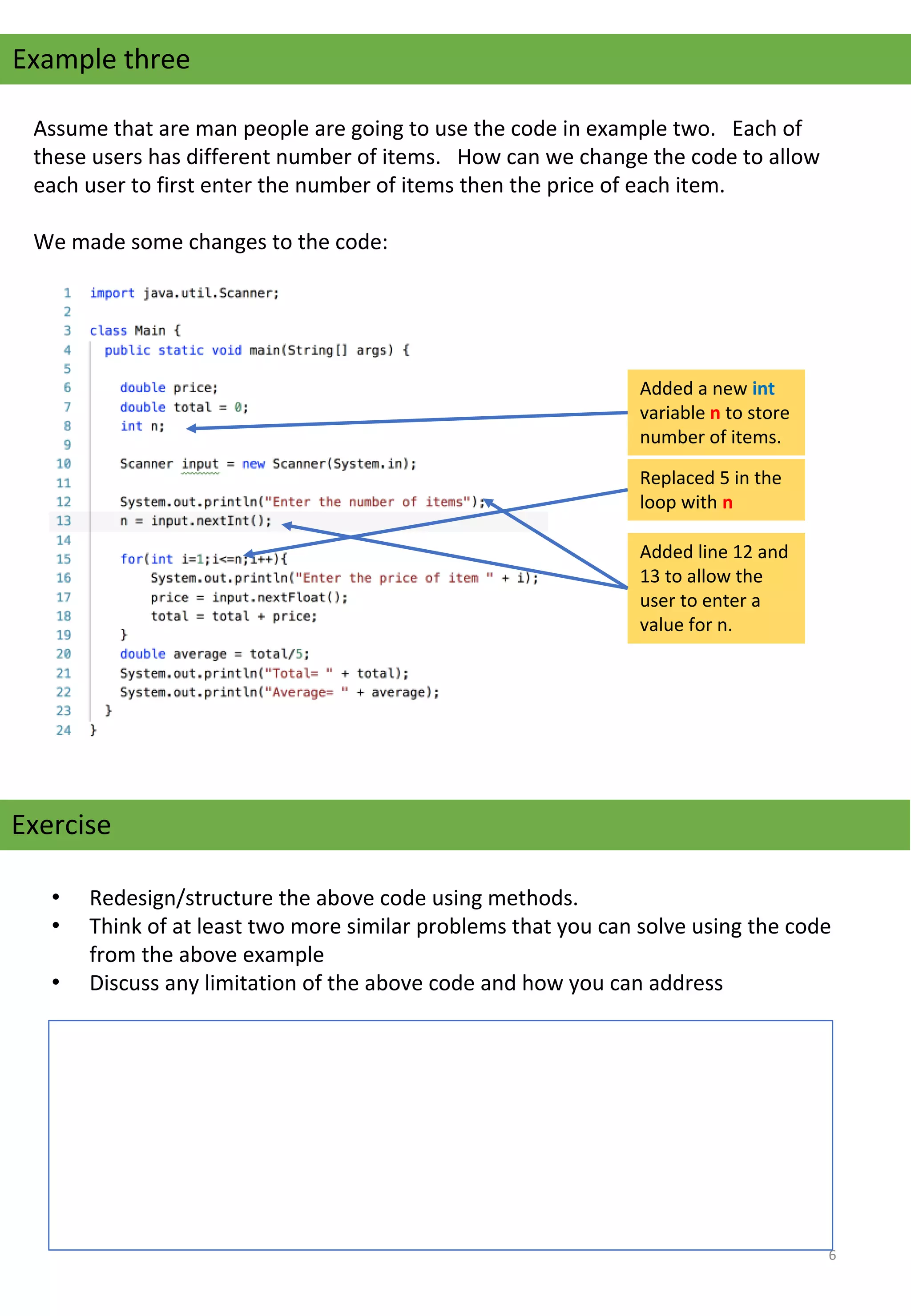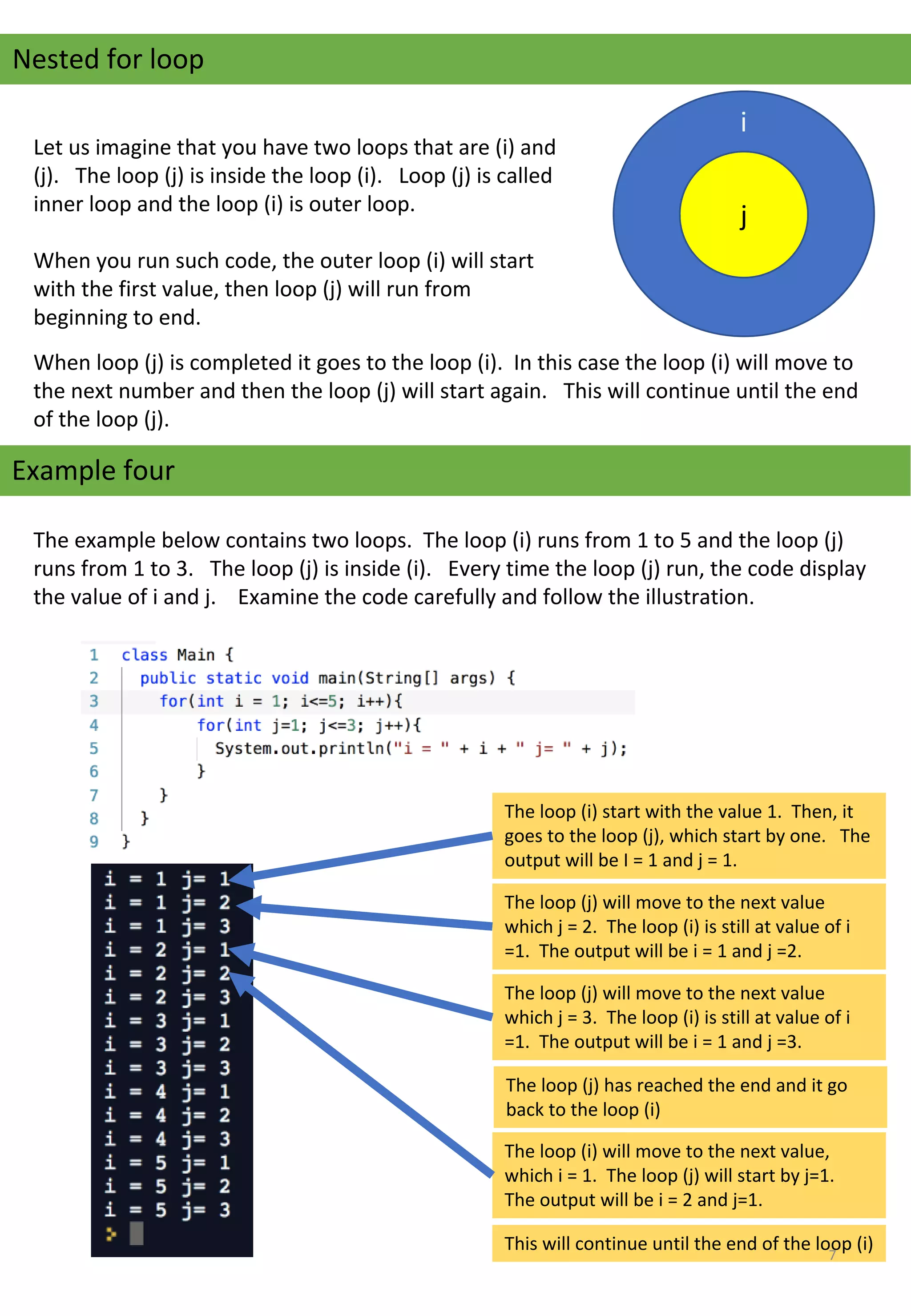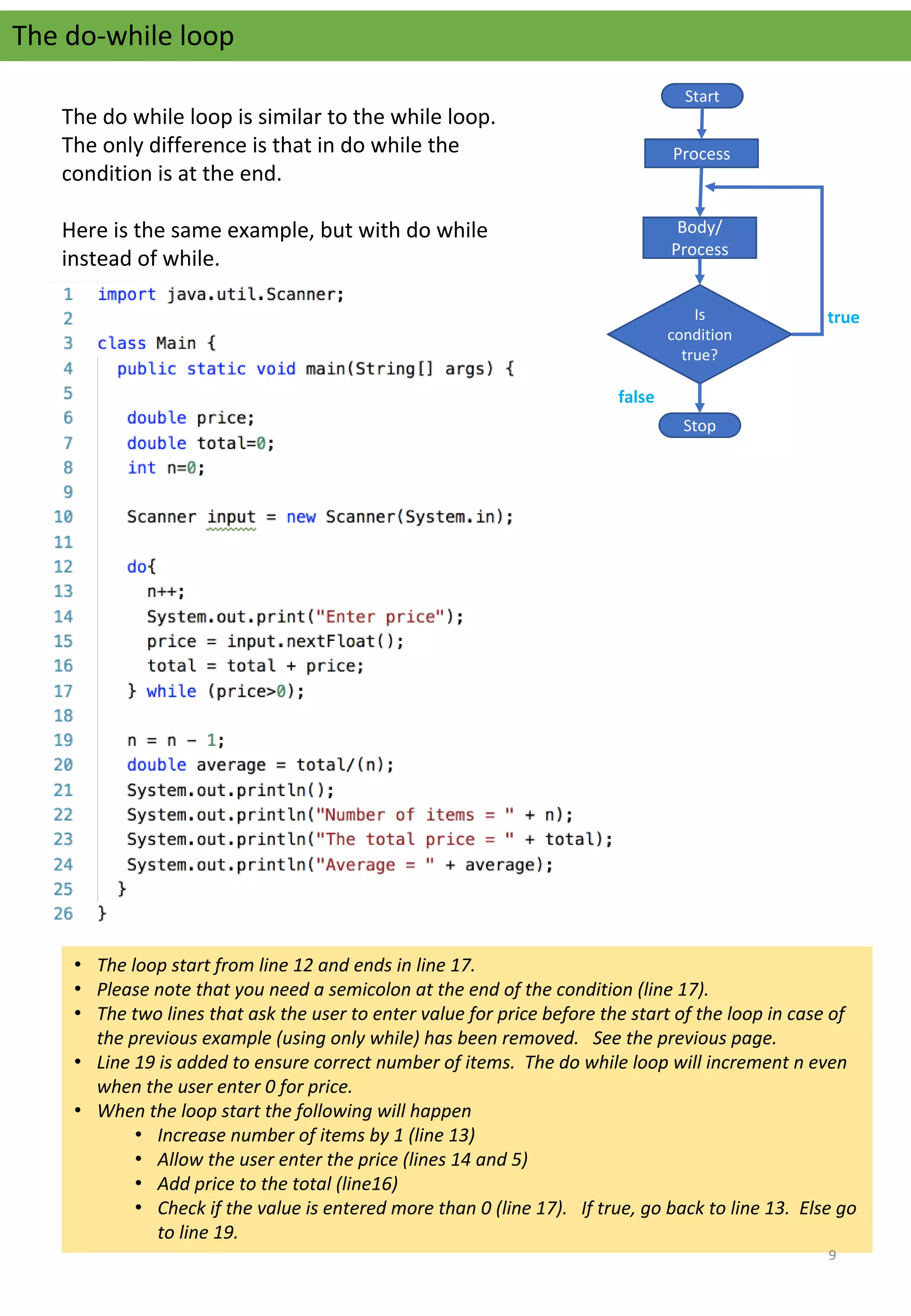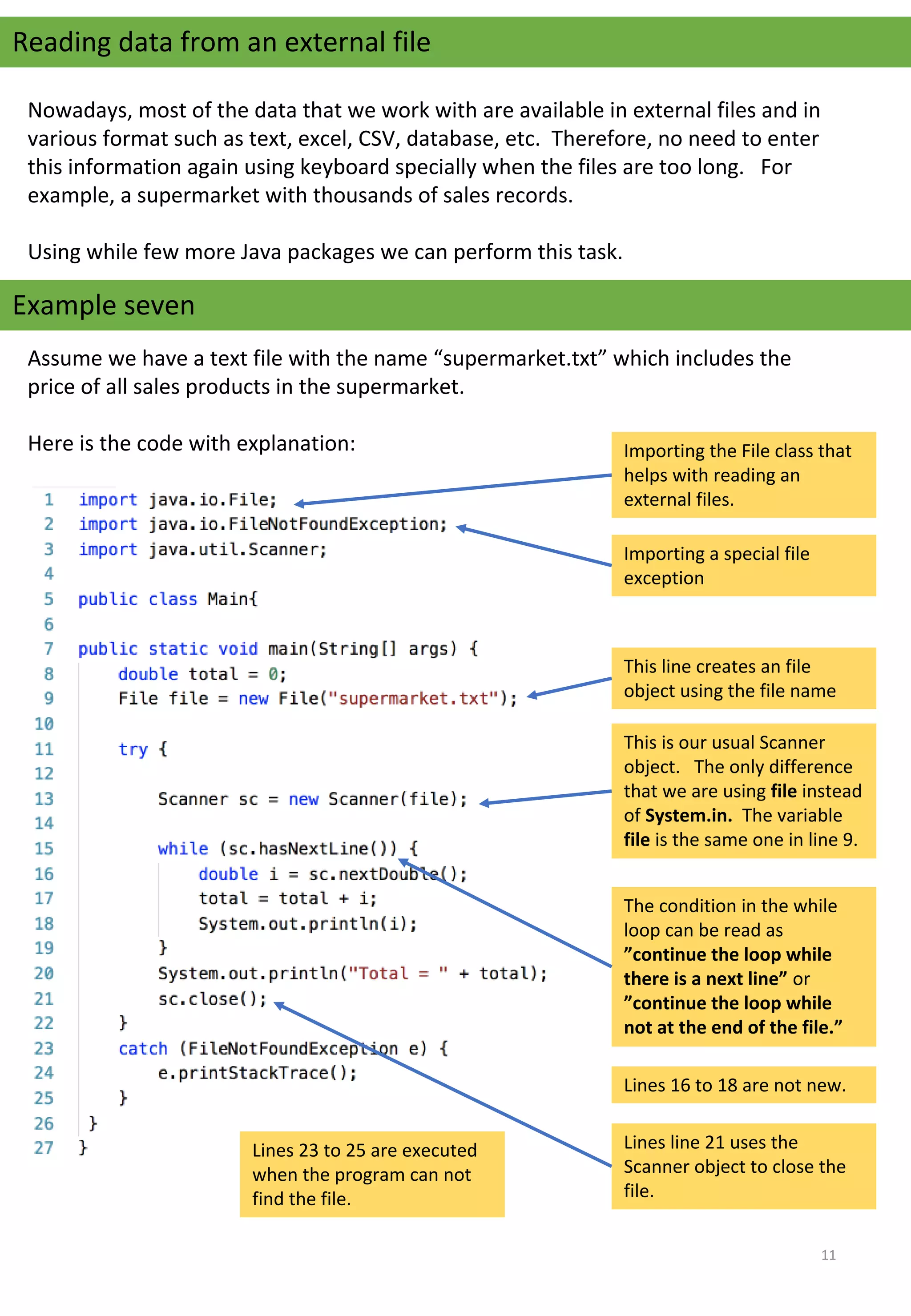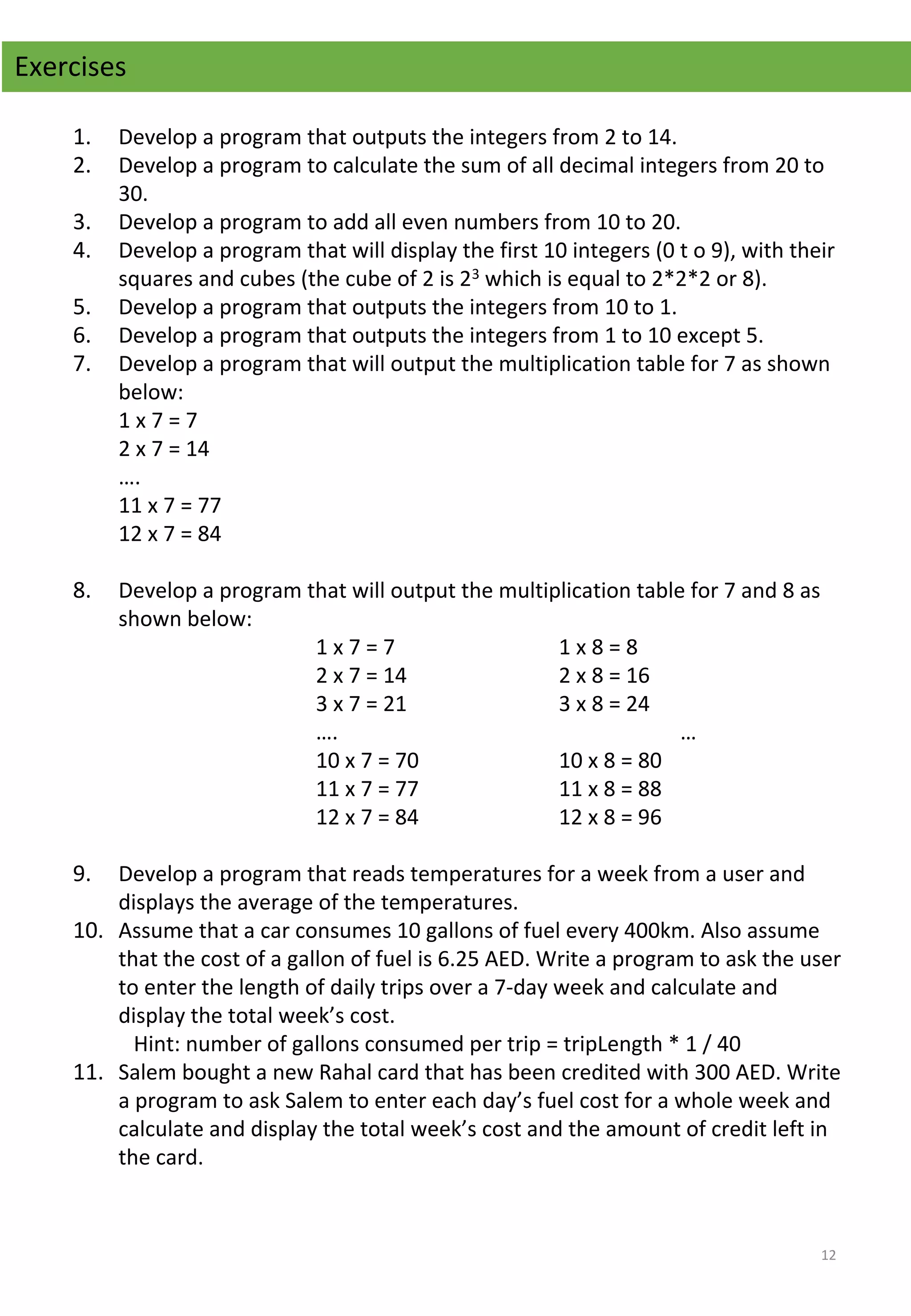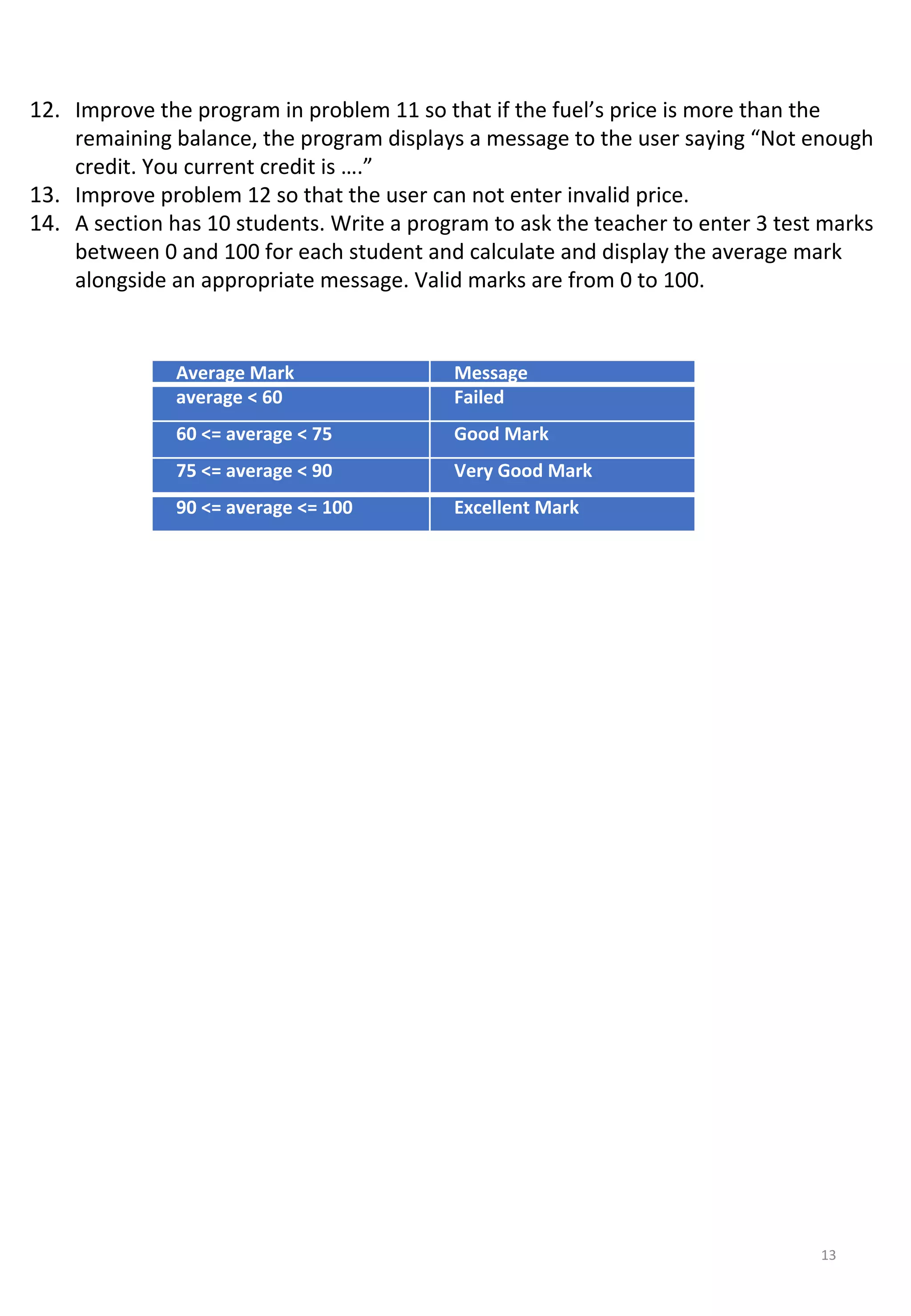This lab focuses on teaching students various iteration techniques in programming, specifically using for, while, and do-while loops, including exception handling and reading from external text files. Students will practice building loops, using nested loops, and handling exceptions while completing various exercises. The lab includes a step-by-step guide and examples, as well as exercises to reinforce the concepts learned.

